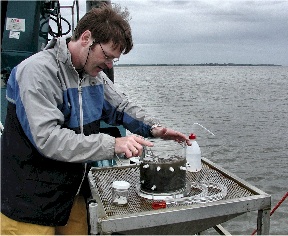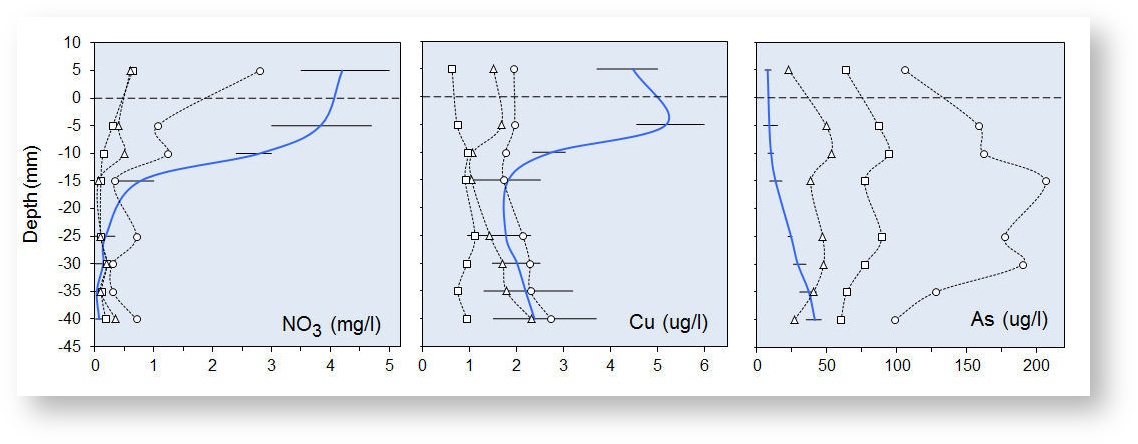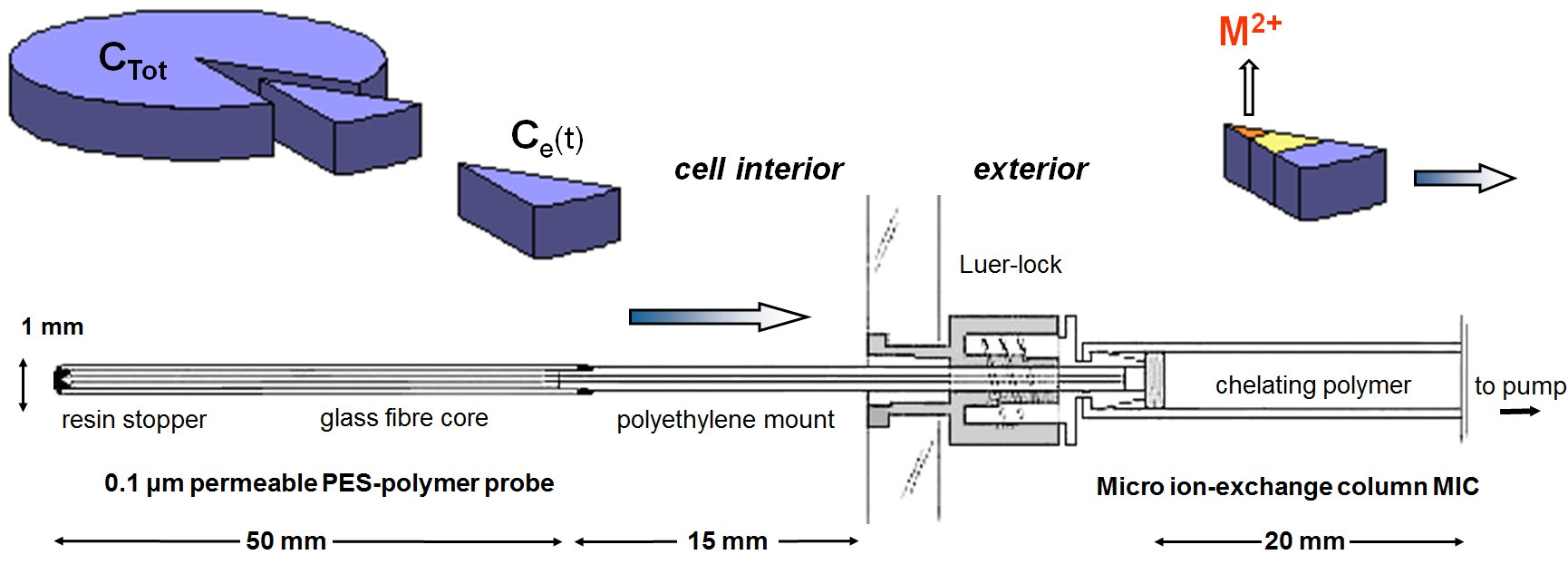



Sampling
SOFIE® consists of a main body core, 200 mm radius, 200 mm height, which is used as a sampling device to obtain undisturbed sediment. Field samples are taken including the overlying surface water.
After sampling, the core is closed at the bottom edge with a shutter plate and is mounted on a base socket. A top socket is attached, ensuring a gas-tight fitting with the body core with an internal silicone seal. The top plate of this socket has four gas tight connectors for electrodes to perform, for example, pH, Eh, EC or O2 measurements. These are inserted vertically in the sample. The sample does not leave the body core but is now part of the cell. The cell wall contains 15 gas tight connectors for probes.
For experimental scenario purposes, aerobic or anaerobic conditions in the water-sediment system may be manipulated by flushing the atmospheric head space in the cell with gas (O2, N2, CO2 or mixture) using a valve.
 Pore water probing
Pore water probing
Polyethersulfon is used as a semi-permeable polymer from which small tubes (1 mm diameter, 50 mm length) were manufactured. Polymer micropores discriminate colloidal fractions > 0.1 um. This mesh size is impermeable to bacteria, so pore water that passes the polymer is sterile. A 0.5 mm fiberglass needle is mounted inside the probe for robustness. The probe is mounted on an impermeable HDPE tube (1 mm diameter, 20 mm length), so the area adjacent to the wall is avoided during pore water. By applying small under-pressure to the probes, pore water passes the polymer. Adhesive force along the fiberglass core guides the sample to the outlet.

Speciation analyses: free ion concentrations
Free metal ion concentration of metals, e.g., Cd2+ is measured via kinetic ion exchange. To separate free metal ions from other forms of organic and inorganic metal ligands in solution, use is made of a chelating polymer which selectively binds positively charged metal ions over a specific time.
Micro-sized, preconditioned ion-exchange columns (MIC; 1 mm diameter, 20 mm length) were designed to contain approximately 600 mg reactive polymer. MICs are connected directly onto the outlet of the probes. In this way, ion exchange is practically instantaneous and is therefore executed at the reigning geochemical status of the probed sediment layer.





